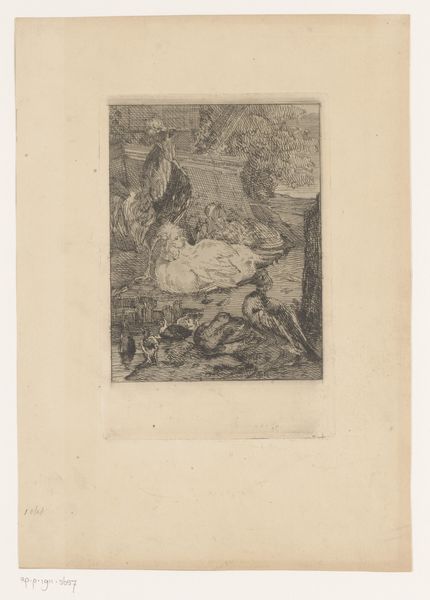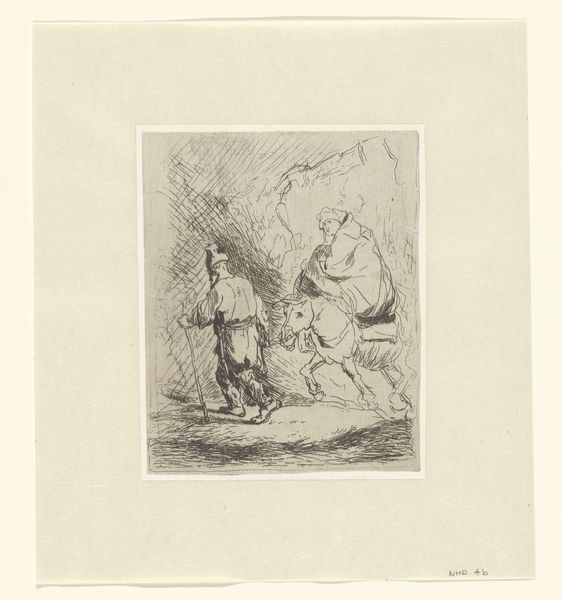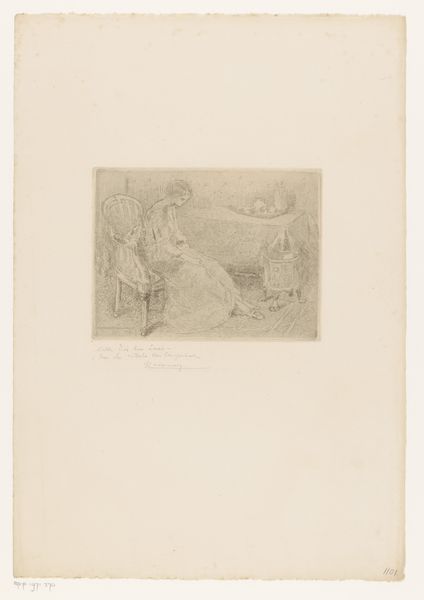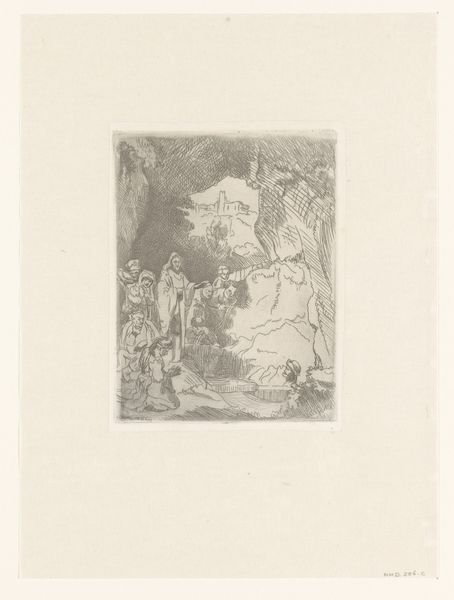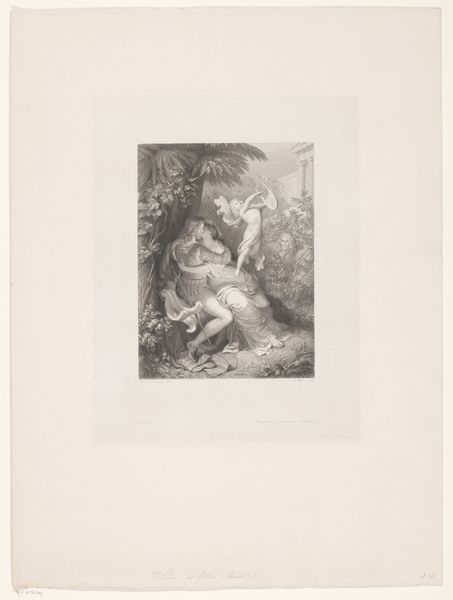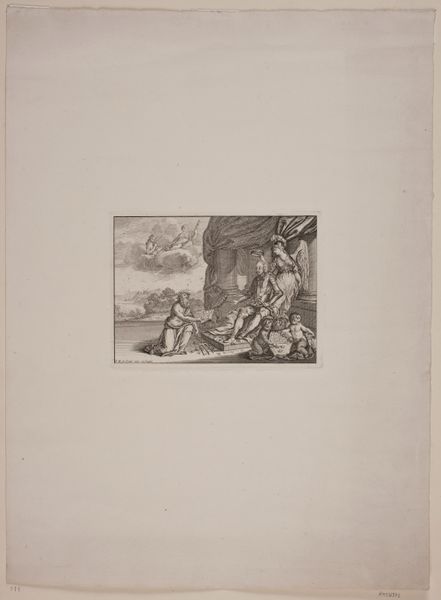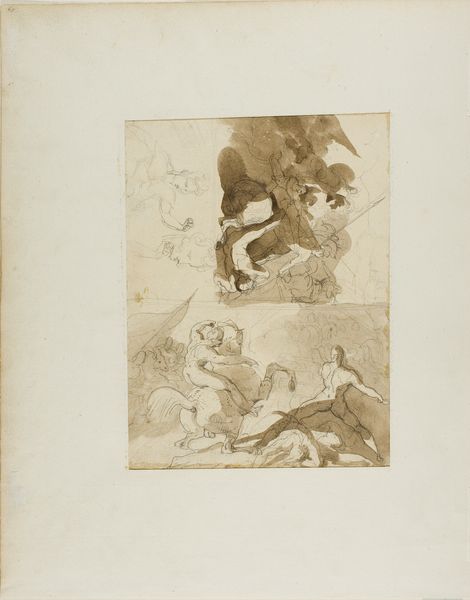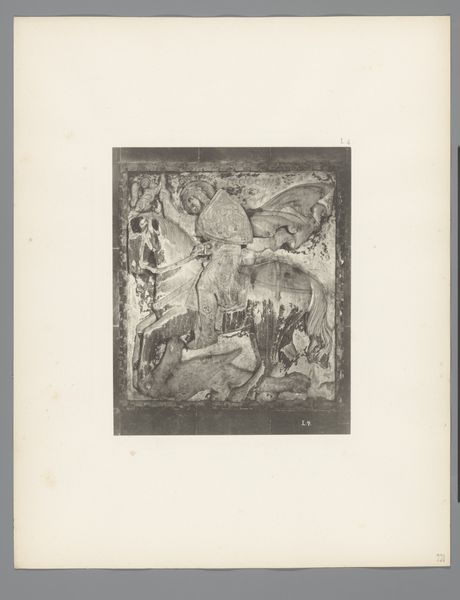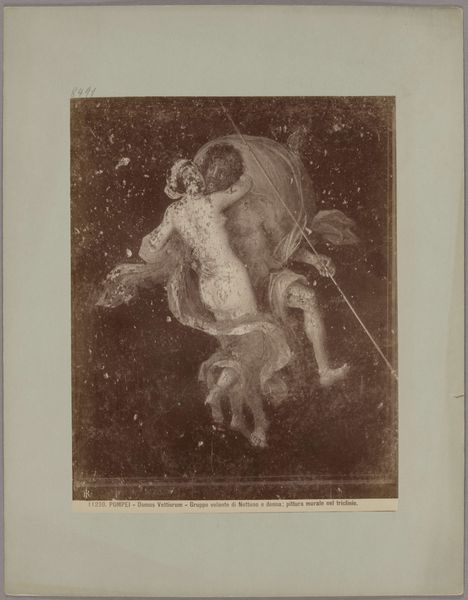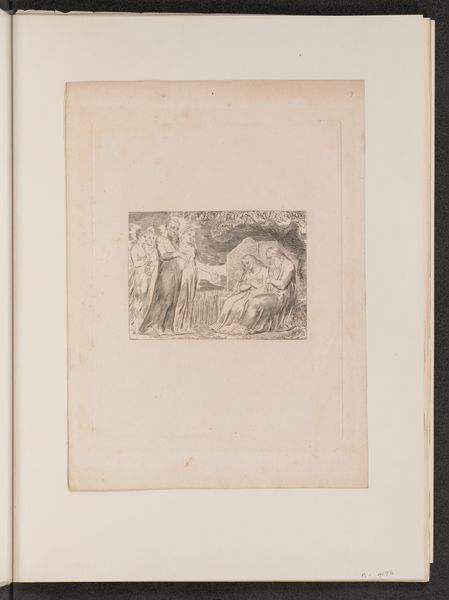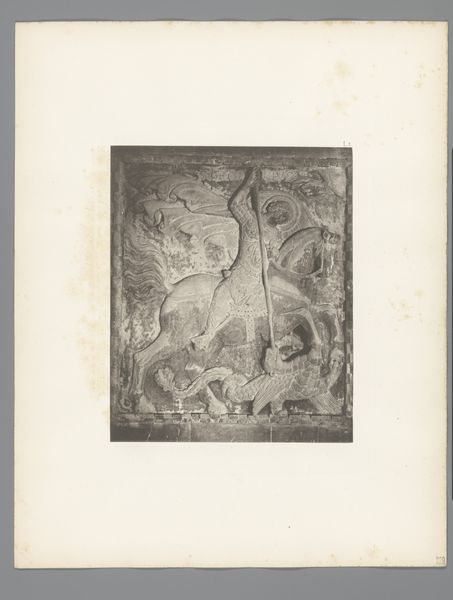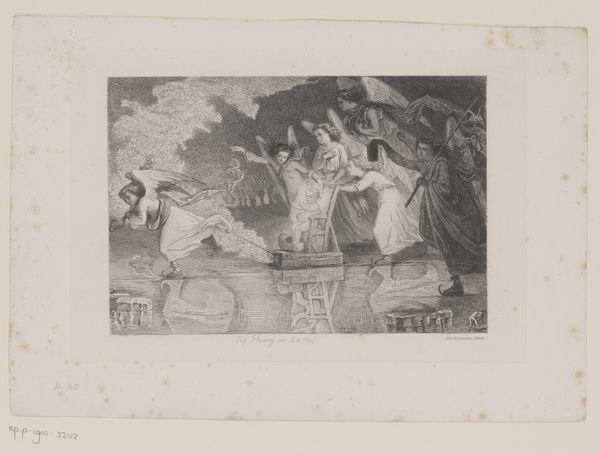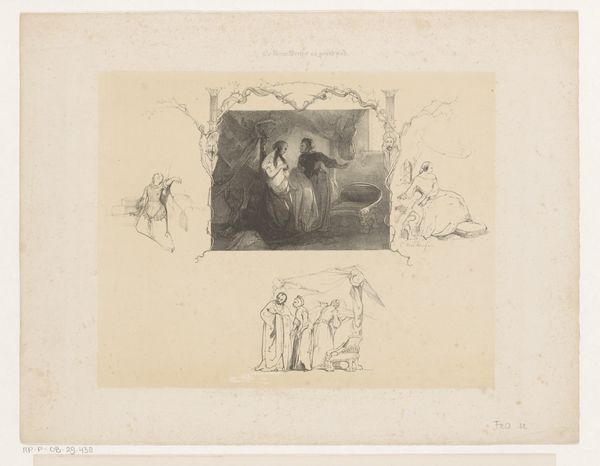
Pompei_ Domus Vettiorum, Affresco rappresentante Bacco ed Adriana addormentata, No. 11206 c. 1880 - 1890
0:00
0:00
albumen-print, paper, fresco, photography, albumen-print
#
albumen-print
#
portrait
#
woman
#
16_19th-century
#
narrative-art
#
paper
#
fresco
#
photography
#
ancient-mediterranean
#
albumen-print
Copyright: Public Domain
Editor: This is an albumen print from between 1880 and 1890 by Giacomo Brogi depicting a fresco of Bacchus and Ariadne from the Domus Vettiorum in Pompeii. I am struck by the fragmented composition, with its visible cracks running through the fresco. What can you tell me about its visual language? Curator: Indeed. The fractured surface plane immediately commands attention, drawing our focus to the materiality of the artwork itself. Observe how the artist captures the scene – note the use of light and shadow within the depicted fresco. How do those formal qualities impact the distribution of value and our comprehension of form? Editor: It’s almost as if the cracks add another layer to the scene. They both obscure and highlight the figures of Bacchus and Ariadne, contrasting the fleeting, captured moment with an implied narrative of time. What about the use of faded color? It is monochrome with muted browns and creams. Curator: Precisely! That restricted palette directs us to analyze relationships and distinctions solely through tonality and value. Notice also how, despite the wear and age evident in the image, Brogi manages to effectively convey the fresco's composition and the narrative scene. Do you observe how certain figures stand out more due to greater tonal range, or through more vivid execution in design or in application of contrast in the values used in representing forms? Editor: Now that you point it out, the interplay of light and shadow sculpts the figures and directs our eye to follow certain contours more intentionally. Are there any other prominent structural elements at play within this visual layering? Curator: Certainly, there is value in recognizing the strategic construction of the composition, how Bacchus’ form contrasts against Ariadne to underscore the story represented. Considering what we have examined regarding value and use of dark against light as compositional strategies, what effect would a change in any value across the painting have on its stability? Editor: I hadn't thought of that. Changing a value would shift the eye and likely detract from its current focal points. Curator: Just so! In closing, reflecting on how the work uses light, shadow, and tone has given both of us a deeper insight into the power of monochromatic forms and pictorial elements as strategies to focus attention within a work. Editor: That’s right. Thanks for expanding my perspective and providing a greater appreciation for form!
Comments
No comments
Be the first to comment and join the conversation on the ultimate creative platform.
